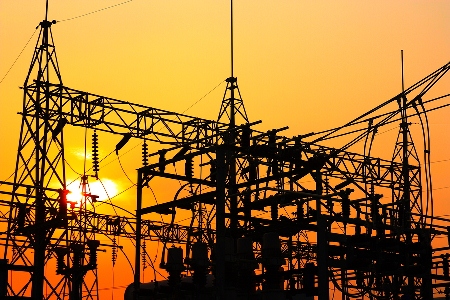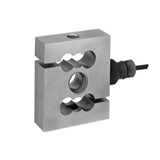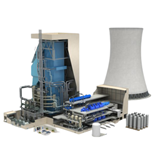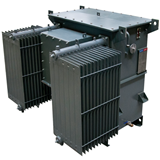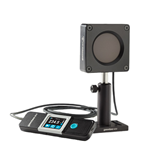The price of energy in Australia is a subject close to the heart, or more exactly bank account, of every Australian home owner. If you pay your household power bill you know to your cost that energy prices have been soaring in recent years.
Of course residential consumers make up only a fraction of Australia's total energy consumption. According to the latest Australian Energy Statistics report from the Bureau of Resources and Energy Economics (BREE), residential consumption of energy accounts for only 11.3 per cent of total consumption. Meanwhile the chief power guzzlers are the transport, manufacturing and mining sectors, combined totalling more than 75 per cent of energy consumed, and industry is paying the price.
Manufacturing production, sales, new orders and employment are all going backwards, and as with any business battling weak trading conditions, industry is trying to rein in its costs, easier said than done when the cost of power is going through the roof.
What's going wrong?
Depending on who you ask the reasons most often cited for Australia's spiralling power prices are a failure of energy policy – specifically the carbon tax and renewable energy target (RET) – as well as rising electricity network costs, and counter-intuitively that decreased demand for electricity in the face of rising costs has actually driven prices up, not down.
Brendan Pearson, Chief Executive of the Minerals Council of Australia, says the finger of blame should be pointed squarely at bad policy.
"A decade ago, Australia's energy costs were among the lowest in the developed world. Misguided policy interventions including the RET, the carbon tax and green energy schemes have seen Australia surrender this advantage," Pearson said.
"The RET currently increases retail electricity bills for households by around four per cent, but for commercial and industrial consumers the effect is significantly greater, up to 11 per cent on average. In the minerals sector, the impact is even higher, accounting for as much as 15 per cent of energy costs.
"Australia cannot simply afford to give competitor nations such a head start in global markets."
Gas prices to soar
Australian Industry Group (AiG) Chief Executive Innes Willox, concurs, but said the impact of escalating gas prices would prove especially harmful to the manufacturing, transport and agriculture sectors.
"Price relief is a high priority. Energy users have endured substantial price increases in recent years, and worse is to come in much higher gas prices," Willox said.
The impacts are the result of sharply higher gas prices as Liquefied Natural Gas (LNG) exports ramp up on the east coast, tripling domestic gas prices to export parity levels.
A report from Deloitte Access Economics back in July predicted that under current policy and realistic gas price forecasts, manufacturing output will contract by $118 billion over the next seven years, with up to 15,000 jobs lost. Meanwhile the mining sector will contract by $34 billion and the agriculture sector by $4.5 billion, the report claimed.
"Gas exports should be pure good news for Australia. However, the strong benefits for investment and export earnings come with serious side effects for domestic manufacturing: tight supply and surging prices. Without reform, our rich energy reserves will no longer contribute to Australia's competitiveness," Willox said.
"We need both a growing LNG export industry and a diverse industry base with a strong manufacturing sector. We need action on two fronts - get more gas flowing, by replacing blanket bans on gas production with strong but workable regulation; and reform the market that gas is sold in to boost competition and transparency."
Impact on industry
Manufacturing Australia is an alliance of nine CEOs from some of Australia's largest locally-headquartered manufacturing companies including Bluescope, Capral, Rheem and CSR.
Collectively, Manufacturing Australia's member companies operate around 300 plants around the country, directly employing almost 50,000 Australians, notably in outer suburban, rural and regional centres.
Ben Eade, Executive Director of Manufacturing Australia, said global experience has taught us that manufacturing flourishes in those countries that identify and exploit their natural advantages.
"For some nations, an advantage is abundant or cheap labour, for others like Australia or the USA, a key advantage is energy," Eade told the National AIE Energy Conference last month.
"Whether we like it or not, a great deal of Australia's manufacturing activity is energy intensive. But that doesn't mean it's inefficient. Typically the opposite is the case. For these businesses, energy prices are a core issue.
"One of my members is CSR. Last year CSR was ranked 17th on BRW list of Australia's most innovative companies. A key driver in that ranking was CSR's investment in efficiency improvements, both in its operations and its products.
"Lightweight bricks, hybrid ventilation products, low emission glass and other products are the result of years of R&D at CSR.
"Energy innovations like these typically aren't driven by policy. They are driven by demand from consumers for more efficient products, combined with the absolute need for large manufacturing enterprises to drive down energy input costs."
Australia was now locked into a winners and losers situation, Eade said, where gains from new LNG export projects will be offset by losses in the manufacturing sector and lost investment opportunities.
"We're seeing the evidence of that already. Closures like the CSR glass factories in Ingleburn in NSW; investments taken offshore – Incitec Pivot building a $1 billion ammonia plant in Louisiana rather than Newcastle; deferred investment: BASF, Coogee Chemicals, Dow so far this year," Eade said.
Jim Snow, Director of Oakley Greenwood, an independent energy industry consultant, said the response from businesses has been entirely predictable.
"Customers have responded as could have been expected – they have reduced their demand through conservation, through substitution, through investment in more efficient products and through simply stopping their use," Snow said.
"The latter for businesses has involved relocation of energy price-sensitive production interstate or offshore, or just closing down production as it became uncompetitive. This was and continues to be economic theory being played out in real time.
"It may be tempting to be dismissive of 'inefficient smoke stack' industrial plants but most modern primary and secondary manufacturing is technically efficient and has made best use of low energy prices and other local advantages."
What next?
The government is expected to announce changes to the RET soon, and with the Australian Workers Union (AWU) also throwing its support behind changes just this week, hopes that a bipartisan deal can be struck are increasing.
As Snow says, the consequence of rising energy prices are predictable – demand destruction and the loss of competitiveness of Australian industry.
"The offsets are intended to be greater national income from international sales of energy and the associated economic benefits from being able to source goods from more cost-competitive countries," he said.
"The question then is – do we have the trade-offs right – are the impacts of the policy decisions worth the pain of the restructuring? Do we even understand the consequences?"

